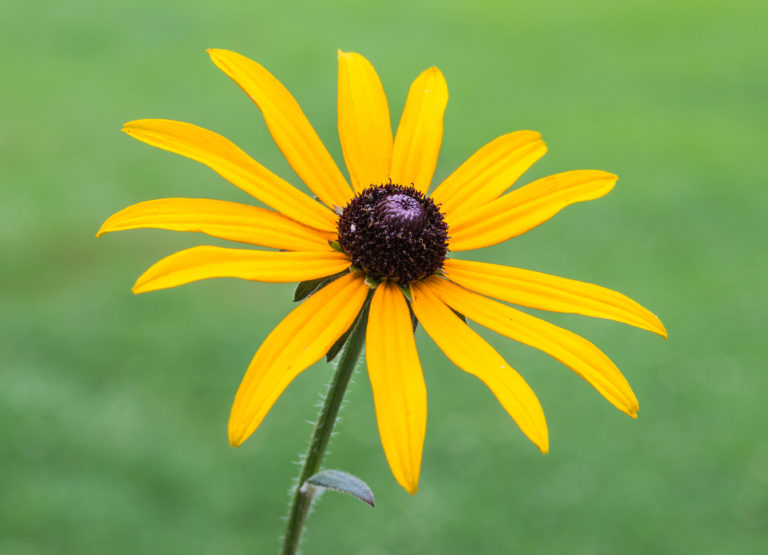This plant is not currently for sale. This is an archive page preserved for informational use.
Black-Eyed Susan ‘Goldsturm’ — sometimes called “Orange Coneflower” even though it is neither orange nor an Echinacea — is one of the most popular, tried and true garden perennials. These beautiful golden flowers are easy to grow in full sun (though it can take some shade), in dryish to medium, well drained soils of various types, showing some tolerance of dry conditions when established. Spectacular in drifts, it is wonderfully prolific, making more of itself by seeds as well as through runners (though its seedlings will not be true ‘Goldsturm’). Straight stems make these super-showy flowers excellent for cutting. Importantly in the South, it is heat- and humidity-tolerant and resistant to many pests. ‘Goldsturm’ is a slightly more compact plant (to 2.5′ tall vs. 3.5′) with larger and brighter flowers (to 4″ diameter vs. 2.5 – 3″) than the species or variety. These flowers attract many bees and other pollinators from mid-July through early fall, and birds love the seeds in fall. R. fulgida var. ‘sullivantii‘ was the 1988 NC Wildflower of the Year (NCBG) and received the RHS Award of Garden Merit in 1993; ‘Goldsturm’ was voted the 1999 Perennial Plant of the Year (PPA).

